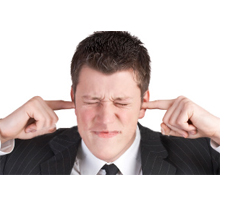 Feedback is technically known as audio oscillation. In simple terms, it is nothing more than sound coming out of the speakers, going back into the microphones and reamplified in rapid oscillating cycles, creating a shrill whine or squeal.
Feedback is technically known as audio oscillation. In simple terms, it is nothing more than sound coming out of the speakers, going back into the microphones and reamplified in rapid oscillating cycles, creating a shrill whine or squeal.
The object of a system is to achieve satisfactory, high fidelity amplification of sound before feedback occurs. Under some circumstances, limited by acoustics and poor equipment, this can be a real challenge.
There is no complete cure for feedback. If the volume of any mic is boosted loud enough, it will eventually cause feedback. However, these are ways that it can be reduced and controlled:
1. Turn the volume down.
2. Decrease gain on equalizer (EQ) or tone controls.
3. Reduce monitor system volume or its EQ gain.
4. Move microphones farther away from sound path of speakers.
5. Use a wide band graphic equalizer and/or parametric equalizer to reduce gain on susceptible feedback frequencies. (Note: When using EQ to filter out feedback, a sacrifice in desired tone quality may result. But if used carefully, an acceptable compromise of less tone for more feedback control can usually be achieved.)
6. Use higher quality, low impedance microphones and equipment.
7. Select tighter patterned, cardioid microphones when possible.
8. Decrease gain on reverb controls.
9. Improve room acoustics to absorb more reflected sounds.
10. Have an audio engineer to perform an acoustic analysis between your system and auditorium using a pink noise generator and oscilloscope. By this method, he can identify feedback prone frequencies and help you tune your graphic equalizer or suggest acoustic alterations to your venue.
